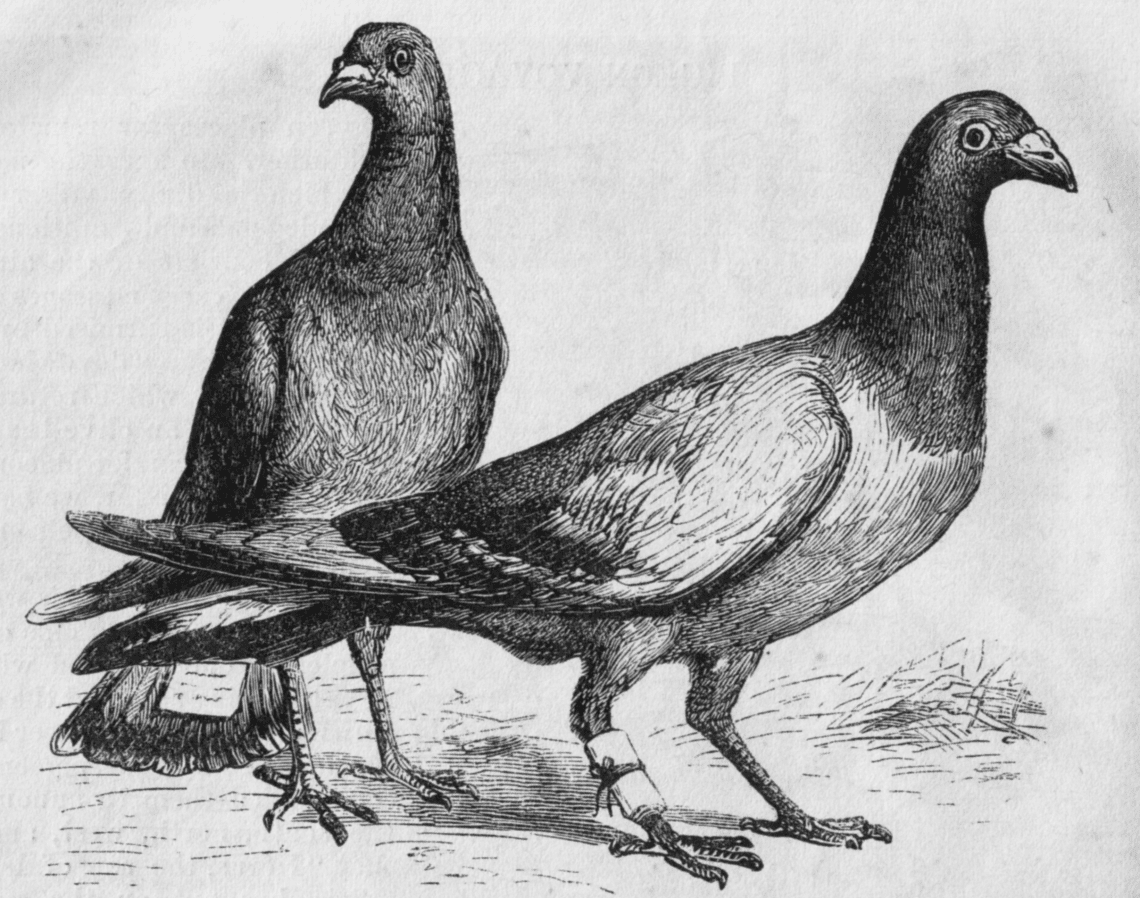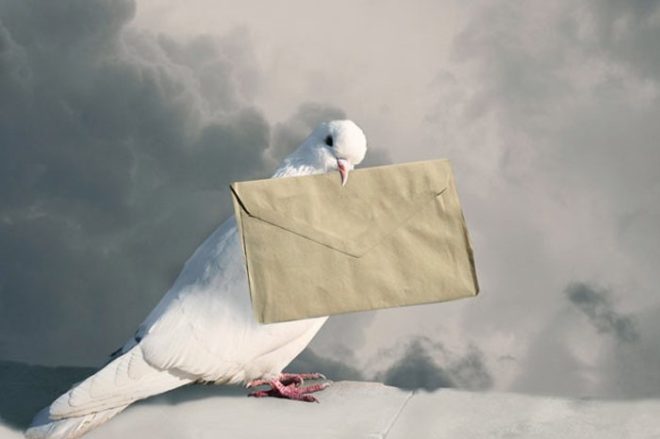
How pigeons began to bring mail
The history of pigeon mail dates back to ancient times, when it was used for military and commercial purposes. These birds have a very good quality – they always come back home. The names of the winners of the great Olympic Games were reported thanks to pigeons.

Later, in the 19th century, sending mail by pigeons became very popular, which began to be used by financiers and brokers. Nathan Rothschild, thanks to the pigeons, found out how the battle of Waterloo ended and took the necessary actions related to securities, after which he became significantly richer and went down in history. In Java and Sumatra, carrier pigeons were used for internal military communications.
When the siege of Paris took place, pigeons brought many letters and photographs sealed in waterproof capsules. These letters were deciphered in a specially constructed room. When the Germans figured out a way to transmit information, they sent hawks to exterminate the pigeons. Until now, in Paris there is a monument to the Dove, preserved from those times. Pigeon mail has taken a significant place in the military industry.
Experiments conducted by Captain Renault in 1895 showed that a pigeon could fly more than 3000 miles over the Atlantic Ocean, after it was found that pigeons that were trained could fly more than 800 miles. After these studies, pigeon mail was used to transmit information to ocean-going ships.
Before releasing a dove on a long journey, it is fed and grain is poured into a basket. The very place where pigeons are launched from should be open and located on a hill. So that the birds are not afraid, you need to leave the food and move away. In order for the pigeons to always be in shape, they are never locked in closed spaces.

In New Zealand, there was a special service, the Dovegram, on Great Barrier Island. This service served as a link between the smaller cities and the island with Auckland. One pigeon was able to send up to five letters. A pigeon that was able to cover the distance to Auckland from the Great Barrier in 50 minutes, gaining a speed of about 125 km / h and earning the nickname Velocity (speed).
The earliest air mail signs were Dovegrams, postage stamps first issued in 1898. The first copy consisted of 1800 pieces. Later, triangular stamps appeared, blue and red. In order to contact the Marothiri, they even came up with their own postage stamp. But after cable communication appeared, pigeon mail had to be abandoned.
During the First and Second World Postal mail was popular. In order to get mail faster than by road, a Reuters reporter who lived in the twentieth century sent pigeons to fetch the mail.

In 1871, Prince Friedrich brought a dove to his mother as a gift, which lived with her for four years, and after even this time, the dove did not forget its home, breaking free, it returned to its owner. In a short time, a dove can fly a huge distance, since these birds have a well-developed memory.
New Zealand celebrates postage stamp week, still using pigeon mail. Stamps and stamps are created especially for this week.
Among the pigeons there are purebred and ordinary. For postage, they mainly use the Flanner, Antwerp, English quarry and Luttich. Each breed has its own history. The smallest are the Luttich ones. The largest are the flankers. They have wide beaks and necks. Slightly smaller, but also large – English quarry, have a small growth on the beak, have a strong body.
It can be said about Antwerp pigeons that they are the most “elegant”, they have a thin neck and a longish beak. They also distinguish the rocky breed of pigeons and the Dutch tyumler.
According to external data, carrier pigeons do not differ much from gray, ordinary ones. It can be distinguished from the usual ones by such features as bare eyelids, a beak with outgrowths, a longer neck, short legs, wings are larger and stronger. They can also be seen in flight – they fly straight, fast, and purposefully.
Pigeon mail has long gone out of fashion, and besides, it was replaced by other types of information transfer. But in order to preserve the memory of this, pigeongram releases are sometimes made, such as in Atlanta, in 1996.





